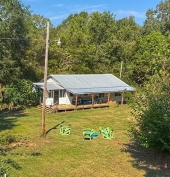The local food and farm-to-table movements are pushing forward a whole new generation of farmers; farmers who look at farming in a completely different way than the traditional mega-agriculture farmer would. Instead of using sprawling landscapes, these greenjeans are concentrating on the most efficient use of even the smallest plot of land, getting a lot of bang for their buck and a lot of food to the market. For them, working the soil is a combination of honest hard work, a love of what they do, and a smart business model – the end results of which create the best of both worlds where farmers actually feed people and make money.
This new farming model is filmmaker Olivier Asselin and Possible Media’s latest video offering, “The Market Gardener’s Toolkit,” where they follow farmer Jean-Martin Fortier through the daily functioning of his Quebec farm, sharing his knowledge of operating a successful farm on 1.5 acres. The film, designed specifically as a video tutorial for those desiring to enter the world of farming for profit, removes the mystery from veggie rearing and opens up a whole new world of modern farming.
From the very first chapter,“The Market Gardener’s Toolkit,” takes a no nonsense, high common sense approach to farm design, management, and food production. Fortier focuses on the “three E’s” of farming: environment, economy, and efficiency. The majority of tools they use on his farm are hand tools, with only one multipurpose Rototiller-style, gas powered tool that uses under $300 of gasoline yearly; such low equipment costs ensure few barriers into entering the honorable profession of farming. Some equipment can even be custom-built on the cheap (like the canister vacuum powered tray seeder Fortier demonstrates) and are pure Yankee ingenuity (or pure Canadian ingenuity, in this case).
The meat and potatoes of this video (well, at least, the potatoes part) clearly defines everything one needs to know about successfully running a market garden farm. Fortier outlines in detail land requirements, equipment, startup costs, farm design, marketing the product, resources, potential pitfalls, and everything in between. Some of the most valuable information he provides is the reasoning behind their best practices, and why taking a different approach than his may or may not work for you.
Fortier also gives you the tools to customize your approach so that you have measurable and consistent success. For example, he standardizes his vegetable beds to serve as a unit of measure; this allows him to calculate yields and inputs on his crops with a very small margin of error, thereby removing some of the slings and arrows of outrageous fortune that normally plague the traditional farmer. Such standardization also lends itself to making other things on the farm easier to implement and duplicate, such as irrigation, greenhouse length and width, row cover requirements, and rotation of crops each season.
And what to do with those crops once they’ve been harvested? Fortier also covers all processes that follow harvesting, including cleaning, bundling, storage, transport, marketing and sales of his crops. The film approaches farming with an eye to vertical integration, from the soil prep to the end sale of product. With each concept, Fortier sows the seeds of the future farmer’s success by leaving nothing to chance; the inputs of time, materials, and manpower have all been calculated with the business acumen of a Wharton graduate, and tempered with almost Amish common sense. Fortier has had plenty of practice condensing his considerable field knowledge prior to filming; his book, "The Market Gardener: A Successful Grower's Handbook for Small-scale Organic Farming," has sold over 70,000 copies.
Possible media’s previous successes include ”The Permaculture Orchard: Beyond Organic,” "Permaculture Skills: A Cold-Climate, Applied Permaculture Design Course," and "The Art and Science of Natural Plaster," both of which incorporated dense information with striking visual appeal. True to form, Asselin and Possible Media have again delivered a clean, crisp, fresh DIY tutorial that is both attractive to the eye, and to the ear. The flyovers of the farm, and the macro views of the rich garden environment would entice even the brownest thumb to try their hand at farming the land. The film style is lively and dynamic, and even static shots where Fortier is explaining the method at hand are not boring. Add to that the whimsical artistic drawings announcing each chapter, and a toe tapping soundtrack that would inspire even the most jaded composter, and “The Market Gardener’s Toolkit,” makes for an attractive education in profitable farming practice.










